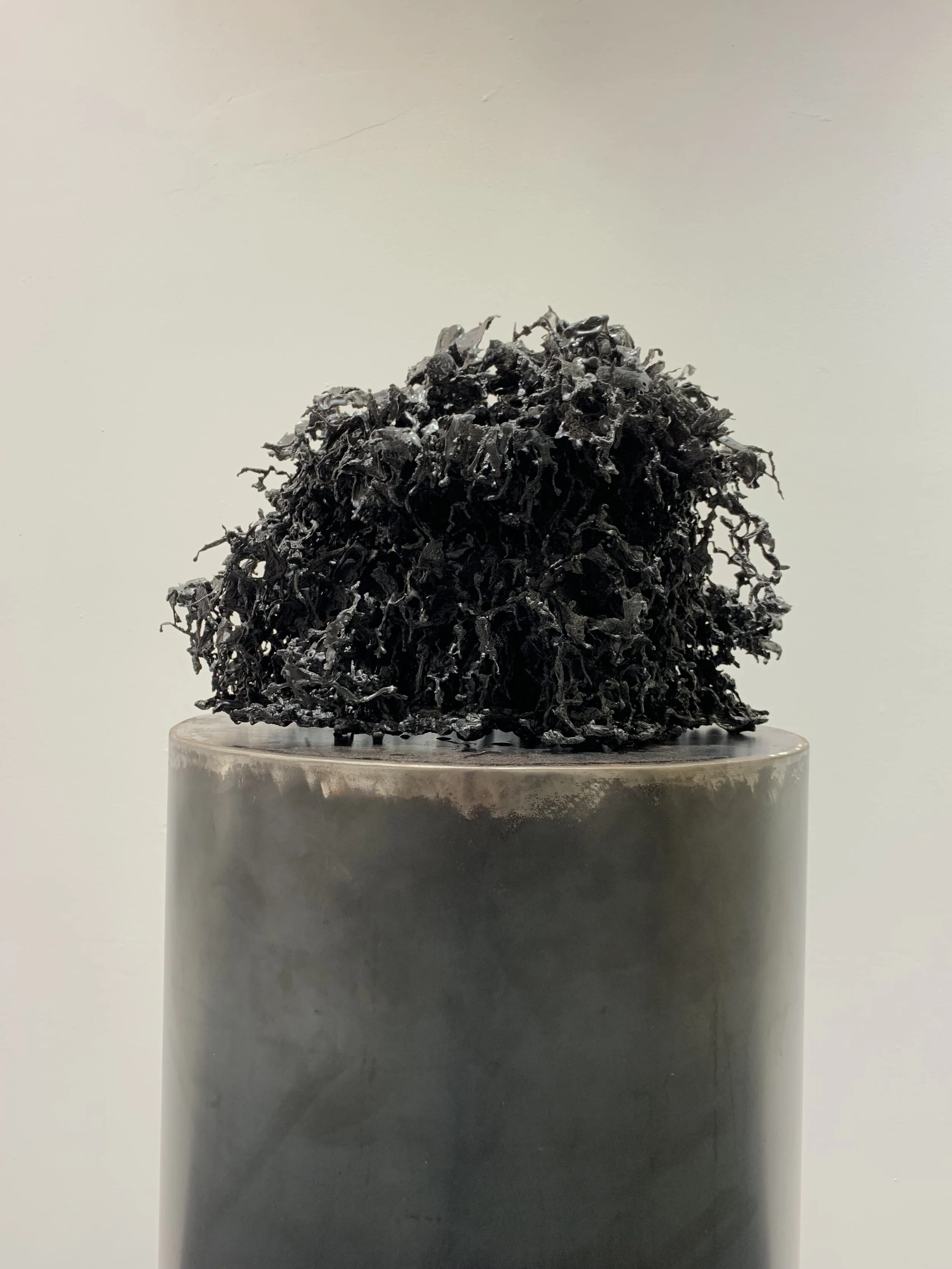Nests and Shelters
Working with beeswax as a painting medium led Gene Kiegel to investigate its origins. Wax, the natural byproduct of the worker bees, is reclaimed for the structure of their shelters, which provide all the fundamental needs of protection and survival. The predominant circular pattern within the beehive is directly related to the insects’ shared physical constitution, dictating a unique unit of measure—their shape. The uninhabitable spaces then become the support of this modular structure.
Gene Kiegel applies this architectural concept in his series. Seemingly chaotic from a distance, each sculpture reveals a deft organization when viewed closely. A singular geometric shape, defined by its absence, guides the structure of each piece, suggesting its potential inhabitants. The resulting artworks exist in the post-Anthropocene, housing new species that reclaim what was once vernacular.
Nests and Shelters
Working with beeswax as a painting medium led Gene Kiegel to investigate its origins. Wax, the natural byproduct of the worker bees, is reclaimed for the structure of their shelters, which provide all the fundamental needs of protection and survival. The predominant circular pattern within the beehive is directly related to the insects’ shared physical constitution, dictating a unique unit of measure—their shape. The uninhabitable spaces then become the support of this modular structure.
Gene Kiegel applies this architectural concept in his series. Seemingly chaotic from a distance, each sculpture reveals a deft organization when viewed closely. A singular geometric shape, defined by its absence, guides the structure of each piece, suggesting its potential inhabitants. The resulting artworks exist in the post-Anthropocene, housing new species that reclaim what was once vernacular.


